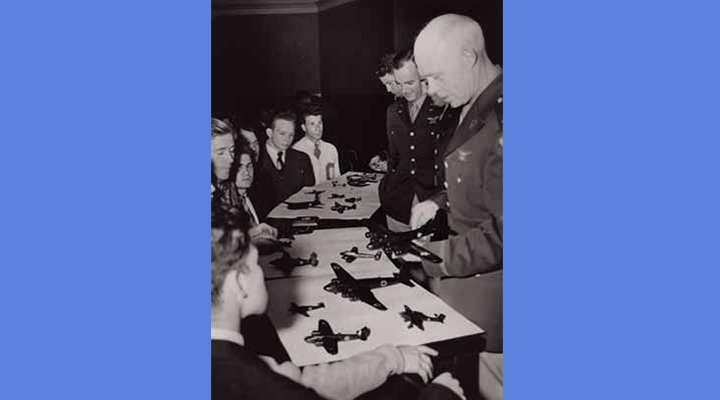Red, White, & Light Blue: A Brief History of the Military at Columbia

During the American Revolution, the fate of Columbia University like the fate of the United States itself, hung in the balance. Although some King’s College students fought for the colonies—such as Alexander Hamilton, who spent his mornings drilling with a volunteer militia before classes—most professors and students were Loyalists, including British spy John Vardill and College President Myles Cooper, who was driven out of his home and back to England by a Revolutionary lynch mob. An interim president briefly took over, but, after classes were suspended from 1776-1784 and College Hall used as a hospital by occupying British forces, the postwar viability of the young school was in doubt, until a new charter and a name change offered a fresh start.
Columbia participated far more modestly in the U.S.’s 19th-century wars, including, somewhat surprisingly, the Civil War, which claimed the lives of two percent of the nation’s population. Columbia students enlisted at rates far below those of students at other colleges, and less than a dozen alumni died in battle. By 1917 a more prominent, more diverse University was able to present a more comprehensive response to World War I, with Extension Teaching offering classes in trench warfare and vegetable gardening (for victory gardens), among numerous others. The University also hosted a branch of the SATC (Student Army Training Corps, the forerunner to the ROTC) and mandated drilling for all undergraduates in the fall of 1918.
Columbia’s response to World War I—and, three decades later, World War II—helped lay the foundation for the modern University. The first Core Curriculum course, Contemporary Civilization, began in the fall of 1918 as “War Aims,” a current-events class for SATC members. The aftermath of World War II brought not only Supreme Allied Commander Dwight D. Eisenhower to Morningside Heights, but also the GI Bill®, a financial blessing for the University, which was still reeling from the Depression. In the years following the war half of Columbia’s students were veterans, most in the extension program, which, as its director noted in 1946, “found places for more than three thousand veterans, and it may be said that no veteran qualified to do work on the college level was turned away.” In 1947, partly to meet the needs of returning veterans, including women from the WACS (Women’s Army Corps) and WAVES (Women Accepted for Volunteer Emergency Service), the extension program was reorganized into an undergraduate college, the School of General Studies.
Since its founding GS students have served in all of America’s conflicts and participated on all sides of the debates surrounding them. Sixty years later, servicemen and -women no longer constitute the majority of the student body, but the school’s commitment remains unchanged: GS continues to be a place where veterans—of other countries’ armed services as well as the United States’—can begin the next chapter of their lives in a supportive community.
This article first appeared in the 2008 issue of The Owl alumni magazine.
GI Bill® is a registered trademark of the U.S. Department of Veterans Affairs (VA). More information about education benefits offered by VA is available at the official U.S. government Web site at www.benefits.va.gov/gibill.
